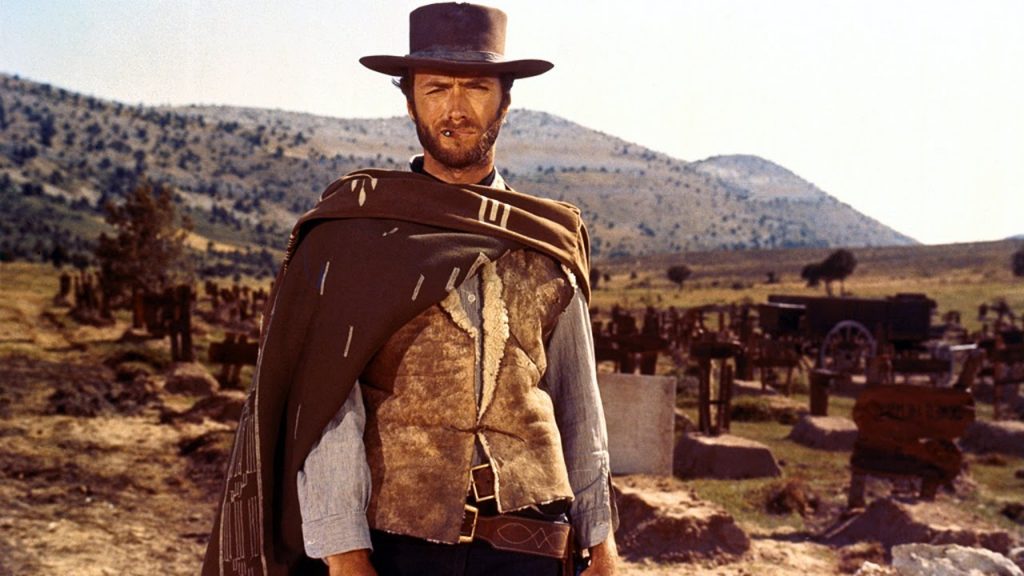
Smoke billows out of a destroyed confederate base. Lee Van Cleef’s angular faced Angel Eyes enters the wide frame, riding his obsidian black horse. He trots up a rocky hill, into the destruction. The late great Ennio Morricone’s haunting score starts silently, slowly rising throughout the scene. Angel Eyes leaves his horse behind, walking on foot into the base, his boots crunching on the gravel and spurs jingling ever so quietly. The base appears empty. Bodies lie dead and mangled in every corner. The scene is veiled by clouds of smoke, debris, and theatrical shadows as a tattered flag waves mournfully in the background. Then, Angel Eyes walks through the shadowed area and his face appears in the light. He steps down into the center and stops. He eyes the perimeter, his face in a grimace.

Morricone’s score begins to swell, melancholic trumpets and a distant yet hopeful snare. The camera begins to move around Angel Eyes in a 360 degree motion. As we move around his face, the stetson he wears casts a shadow over his features. His expression changes from one of anger and disgust to one of pity and hopelessness. This small moment is from Italian filmmaker Sergio Leone’s spaghetti western The Good, The Bad, and The Ugly . It was deleted from the original cut of the film, but twenty years later, when the Film Foundation restored the 35mm negative, this scene was included. To some viewers, it may just be some filler or needed development for Angel Eyes’ character, but one must look further and more intensely to discover not only a pattern within the film, but one that spans the entirety of Leone’s short but prolific filmography. What would be easy to categorize as an anti-war scene (it very well might be) is actually a perfect example of Sergio Leone’s tenderness as a filmmaker.
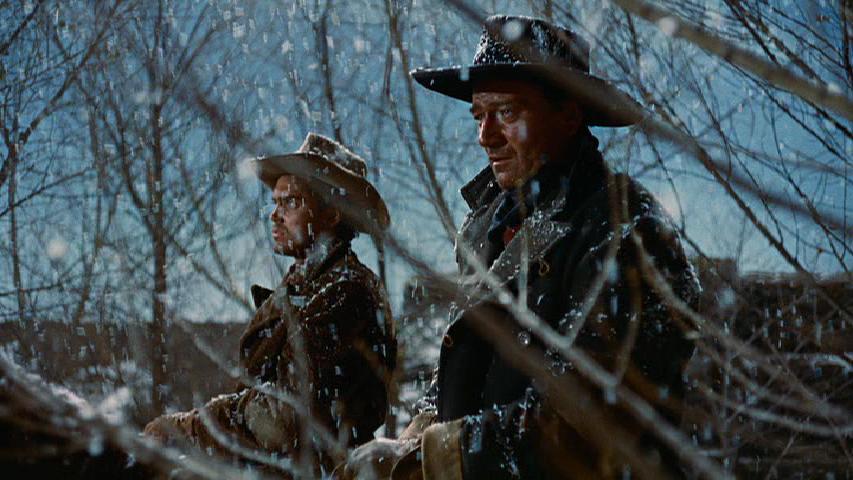
As opposed to his genre predecessors (Akira Kurosawa and John Ford) and his contemporaries (Sergio Corbucci) Leone’s films always took a more humanist approach to their themes. Leone had a deep affection for his characters. He placed them in scenes where their emotions would be tested, where the audience could see them at their most vulnerable and injected his love and caring nature into them, radiating tenderness of the screen. Leone had this beautiful love of world cinema, it was apparent in all of his films. For example, take a look at a wide eyed Jill entrance, stepping out of the train in Once Upon a Time in the West; her first view of the American West after a life in the city. The camera follows her and cranes operatically over the station and into the bustling frontier town.
![Once Upon A Time In The West â [FILMGRAB]](https://film-grab.com/wp-content/uploads/photo-gallery/14%20(788).jpg?bwg=1547240866)
Leone’s characters had a keen interest and love for America, just as he did. His movies were never about Italy or set in Italy. They were about America and his love for America. Leone once said; “I can’t see America in any other way than with a European’s eyes, obviously, it fascinates me and terrifies me at the same time. The more I love her [America] the more I feel light years away from her”. We see Leone’s West through Leone himself. Leone only knew America from films. His vision of America was wide CinemaScope vistas and uncomfortably extreme closeups.
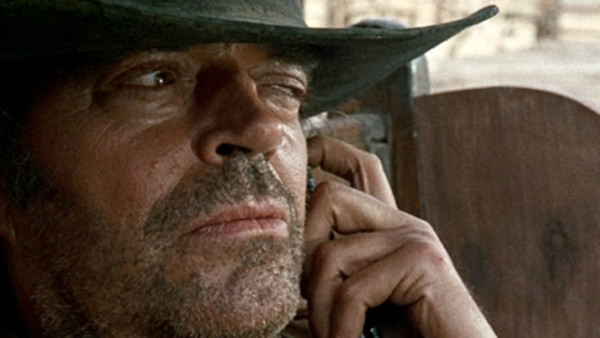
Leone wanted us to see the souls of his characters’ eyes and the pores on their skin. He never saw things in mediums. Leone said; “In America, there’s the whole world. In Italy there’s Italy and in France there’s France. The problems of America are the problems of the whole world: the contradictions, the fantasies, the poetry. The minute you touch down on America, you touch on universal themes. For better or worse, that’s the way it is”. Leone was a global filmmaker and the way he captured the West with his foreigner’s eye revealed a sincere and caring love. His films were romantic and imaginary versions of America; an idealized fantasy. “America is a dream mixed with reality”. Leone often took his mythology, story structure and style from the Japanese samurai films of Akira Kurosawa. Like Leone’s westerns, they were about lone and mysterious killers who rode into town and started mischief. Ronins were swapped out for gunslingers and warlords became gang members and bandits.
A Fistful of Dollars is a nearly shot for shot remake of Yojimbo. Like Leone, Akira Kurosawa was famously inspired by “Western Cinema”; the films of legendary western director John Ford. Ford’s films showed a predominantly white American west, where there were good guys and bad guys, cowboys and Indians, and always a damsel to save somewhere. Horses had nick-names and everything was about honor. Leone’s films were almost a reinvention of both. They were a true admiration piece done by Leone as homage to the ones who came for. It was his respect for the white American westerns of Wayne and Ford. In doing that, he reinvented the genre as a whole.

Leone’s films were more complicated than the John Wayne and John Ford westerns. The good guys didn’t wear white hats and the bad guys didn’t wear black hats. The good guy was unshaven and dirty and killed more than the bad guy. Gone were the sweeping orchestrations of Dimitri Tiomkin. Trombones, harps and violins were replaced by Ennio Morricone’s eclectly odd score consisting of gunshots, cracking whips, whistles, chanting voices, trumpets, and electric guitars. Not only was this a huge step away from previous western scores, this was an entire revision of movie scores in general. It was an unorthodox way of making music for a filmmaker who’s filmmaking process was unorthodox itself. Using a mix of American and European actors all speaking their own languages and all dubbed into one language, and shooting on a shoestring budget in the mountains of Spain was not a traditional method of making a film.
Leone completely reinvented the western genre. He took a waning genre and injected life into it. Leone took the genre archetypes and turned them on their head, a complete subversion of what had come before. Leone’s films served as a catalyst for a rapid growth in interest for the Western. The films of Ford were already outdated. Younger audiences of the counterculture era didn’t care for John Wayne anymore. They cared for the more androgynous types dominating the screen, and although Eastwood was certainly the epitome of masculinity, he was the anti-hero people wanted. “Critics could sense that the American cinema was changing and that its old pieties and genres, often spoken of in the same breath, were in a vital sense dying out.
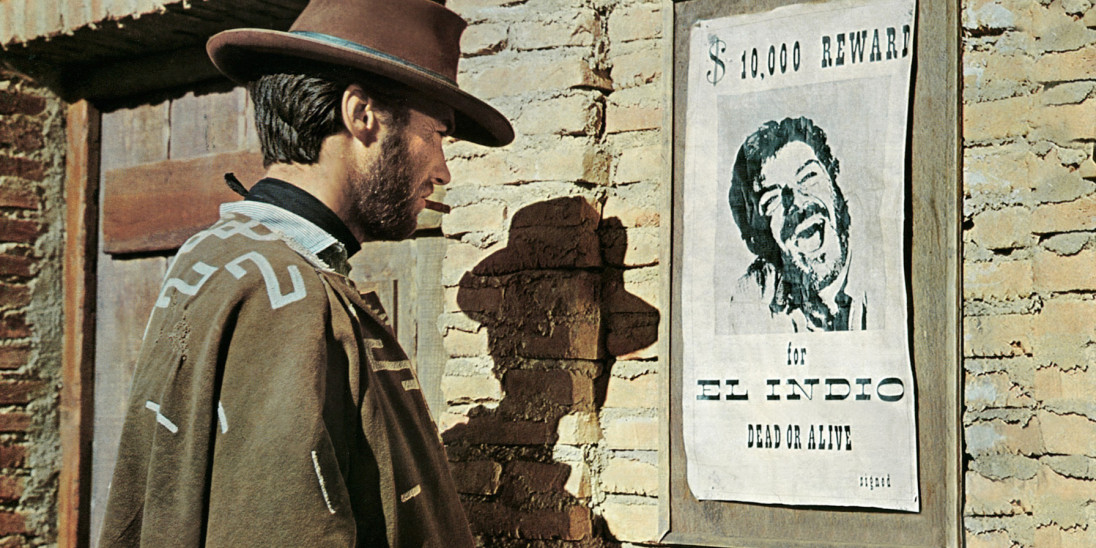
Among them, the Western was perhaps the greatest barometer…the genre long seen as most uniquely American, most assuredly linked to the national character and mythology, seemed to be evolving into a new, rougher beast” says William McClain. At the same time, Leone’s spaghetti western revolution caught the eye of other Italian filmmakers seeking out of the studio system, most notably Sergio Corbucci. Corbucci’s films, while sharing Leone’s themes of rogue anti-heroes and oddball scores, were vastly different. Corbucci’s films were dark and violent, often ending in bloodbaths and cynical endings. Amidst all this tearing down of the old and reinvention was one thing that Leone’s films had that his predecessors and contemporaries did not have. Yes, Leone’s films were starkly different with their jarring changes and new violence, but one thing that has been left out of every Leone retrospective or conversation. His tenderness. Leone’s films had a warmth and gentleness to them that was not seen in films dealing with his subject matters at the time.
In Once Upon a Time in America, a young hoodlum named Patsy waits outside an older girl’s apartment. The girl, Peggy, promises sexual favors to any boy who gets her the most expensive cream pastry. When he arrives, she doesn’t immediately answer the door, so he waits with the pastry sitting in his lap. After a while of waiting, curiosity gets the best of him and he sticks his finger in it, just for a taste. Within the next minute the whole pastry is gone, Patsy wiping his mouth. It’s the longing and sad satisfaction in this scene that is another key moment of tenderness in Leone’s filmography. It is not so different to the scene we first examined. A somewhat one dimensional character being humanized in such a raw and beautiful scene. Patsy’s intentions are not morally condemn-able but Leone makes him lovable through this extraordinarily human scene. A simple scene. That pastry is all it takes for us to understand that this boy has nothing and nobody.
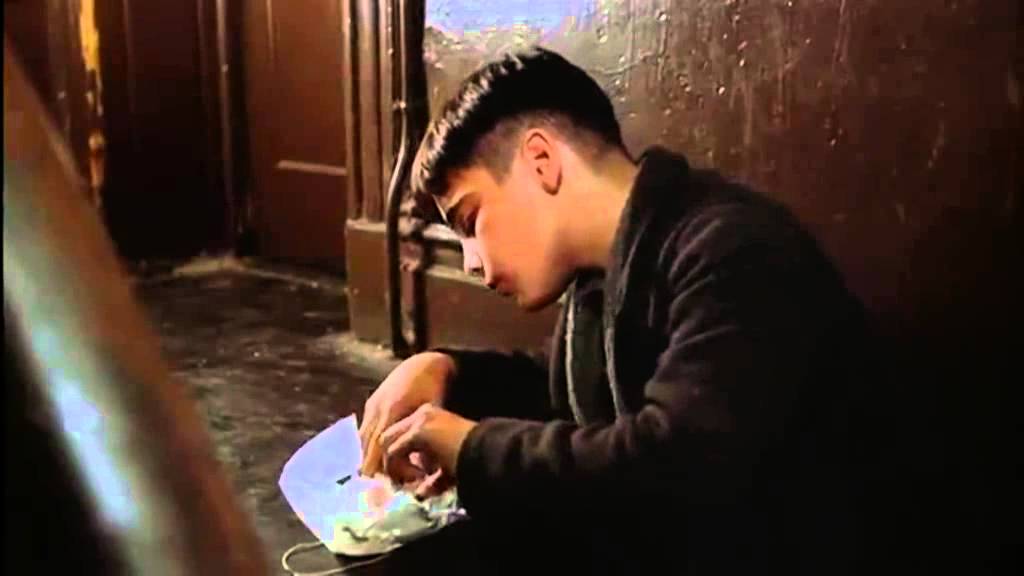
Now, the scenes in The Good, The Bad, and The Ugly are much more random and even jarring due to the film’s rapid pace, stylized violence and adventure whereas Once Upon a Time in America is an all around tender and bitter reflective epic. Perhaps Leone’s most poignant scene of tenderness comes again, in The Good, The Bad, and The Ugly. Blondie, played with effortless cool by Clint Eastwood, and Tuco, the manic and crazed Eli Wallach, roam around a smokey grass field until they run into a destroyed shelter. As Tuco continues on to find Sad Hill Cemetery, Blondie stops to light a cigarillo. Smoke erupts from his lips as he looks up with his signature sun-baked squint and stares past the frame. We reverse to see in the far back, a young dying soldier breathing his last breaths.
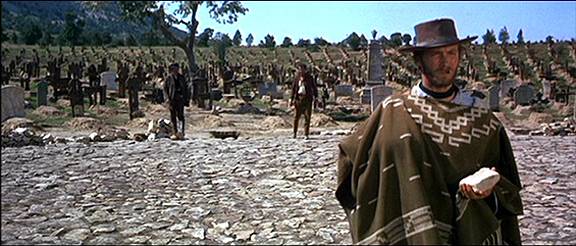
Blondie slowly walks over to him, he takes off his large trench coat and lays it gently over the dying boy. He touches his bloody wound, the boy flinches in agonizing pain. After a moment’s thought, Blondie takes out his cigarillo and puts it into the boy’s mouth. The boy takes a drag, his eyes relax and he opens his mouth with relaxation as a cloud of smoke eases out. Blondie looks back at the whining horse and when he brings his attention back to the boy, he has died. The handing of that cigarillo shouldn’t have the effect that it does, but Leone makes that moment and that bond so hugely touching. It’s a dying acknowledgement of love or respect.
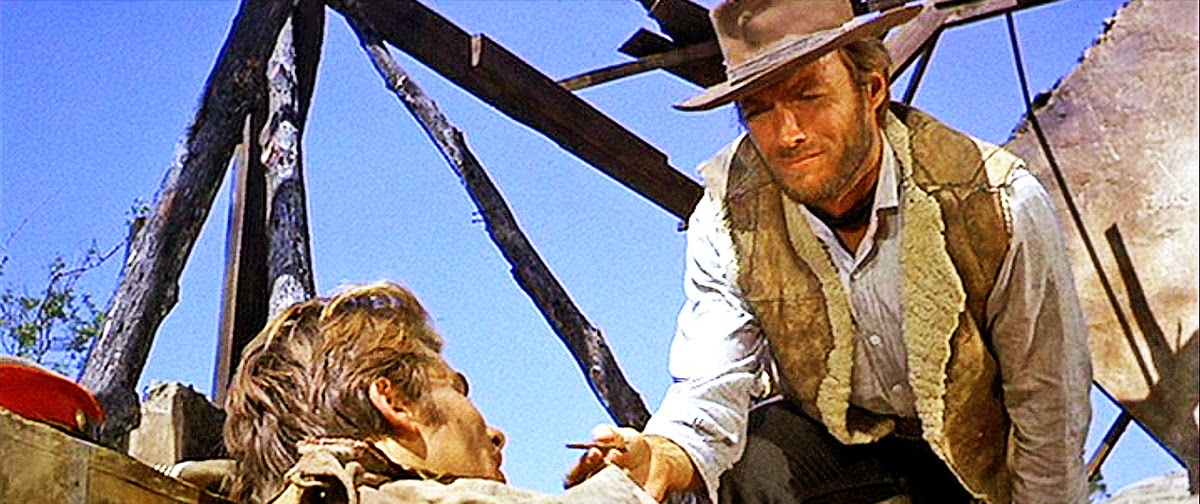
Now, critics of Eastwood have labeled him one-dimensional and hollow. It is true, throughout the Dollars Trilogy he often had the same look on his face; a scowl and a squint. Yet when Blondie sees the boy has died, Eastwood’s face changes so subtly. His eyes barely open from their squint and with that face, the scene speaks volumes. And as he gets up, he sees the boy’s poncho slung over on a slab of wood and takes it. Blondie is keeping this moment as a sentiment, just as we should. Looking back at that scene of Angel Eyes at the confederate base, I realize something. Although Angel Eyes is “The Bad”, Leone has chosen to give him this characterization. He has chosen to humanize him.
I think about the title of the film; The Good, the Bad, and the Ugly. It’s quite misleading, in fact. Neither person is really good, bad, or ugly. The Ugly, an abrasive and loud mouthed bandit, has absolutely no moral code, but in a scene with his brother, a priest, we discover his backstory, his troubled soul and how he tried to make the right choices but went down the wrong path. Leone allows us to see him naturally, to almost pity him. From his brutal actions to his chilling facial features, the Bad is a sinister and cold-hearted hit man.
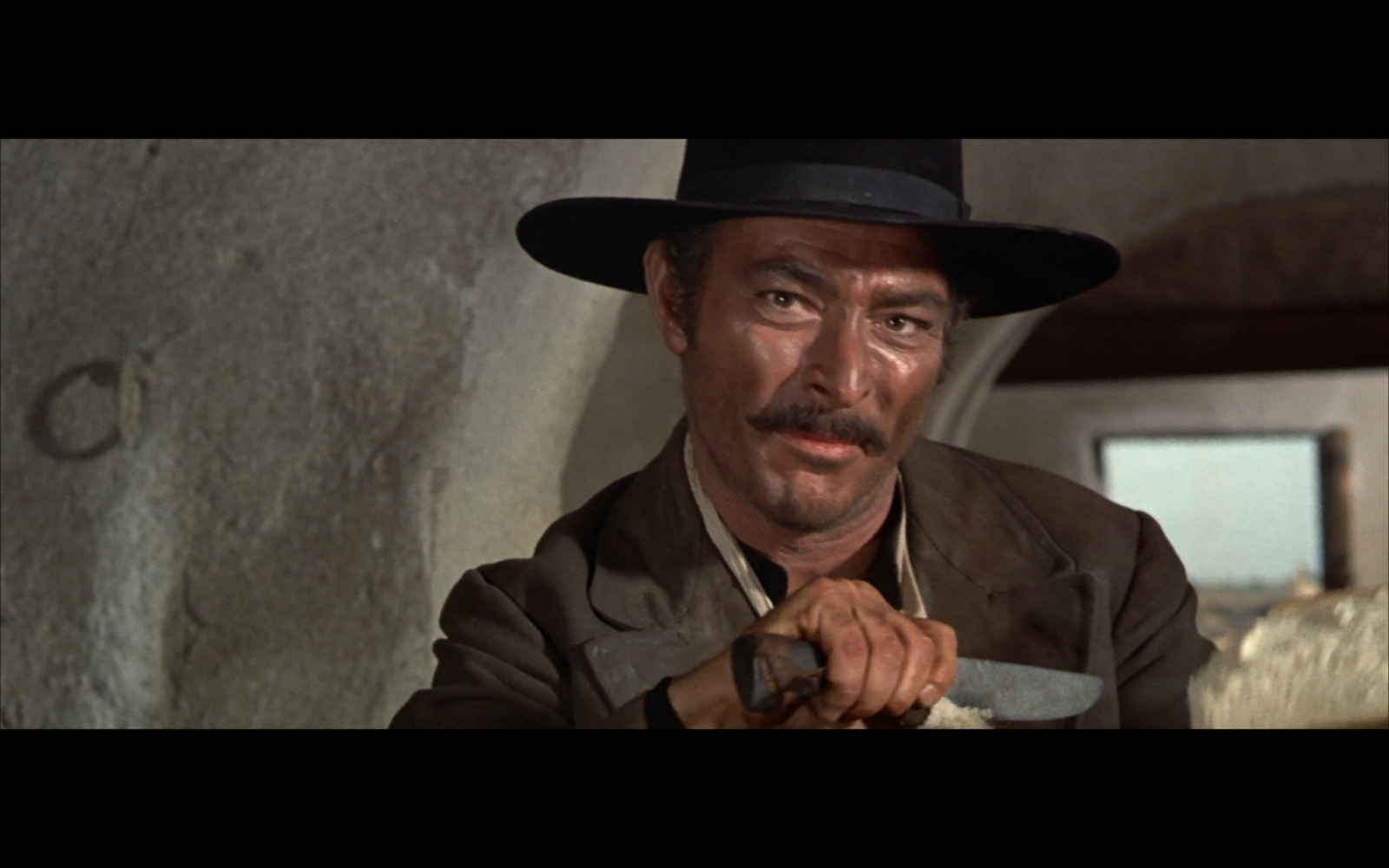
He murders an entire family and his own boss without batting an eye, in fact he even lets out a heart-stopping chuckle at the latter. He orders the beating of a man, until he’s nothing but a bloody pulp. Yet, when he sees the destruction and senseless death the war has caused, Leone captures that despair, that disgust and that hopelessness in his face. We then realize he must not be as hollow and vile as we thought. The Good, while being the shining symbol of cool and calm is not as Good as his title suggests. While he certainly proves himself to be a decent man and a “guardian angel”, he kills far more than any other character in the film. He backstabs his partners and leaves them hanging to near death. He leaves a man to die in the boiling hot desert, almost a hundred miles from the nearest town.

Yet, we are perfectly content labeling these characters as The Good, The Bad, and The Ugly. Like I said, let’s take that closer look. Leone was far more interested in starting with those names and going further and analyzing them through exploring their tenderness. Leone once said; “Sometimes if I choose settings for my films that are underdeveloped or slightly criminal, it’s also to make the point that sometimes the good guy; if you scrape a little of the varnish off, is a little less good, and the bad guy, with a little less of the “bad guy” varnish, is a little less bad”. He saw the tenderness in every moment and everything. From the pastry to the cigarillo.